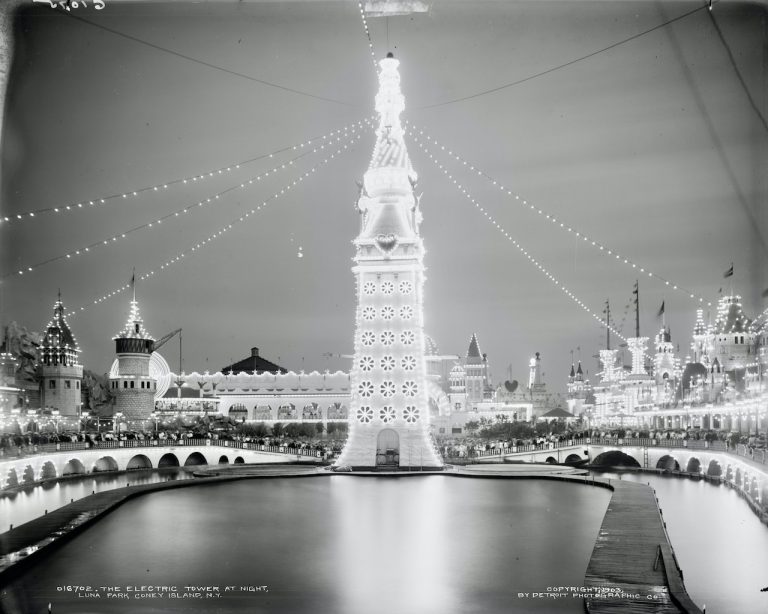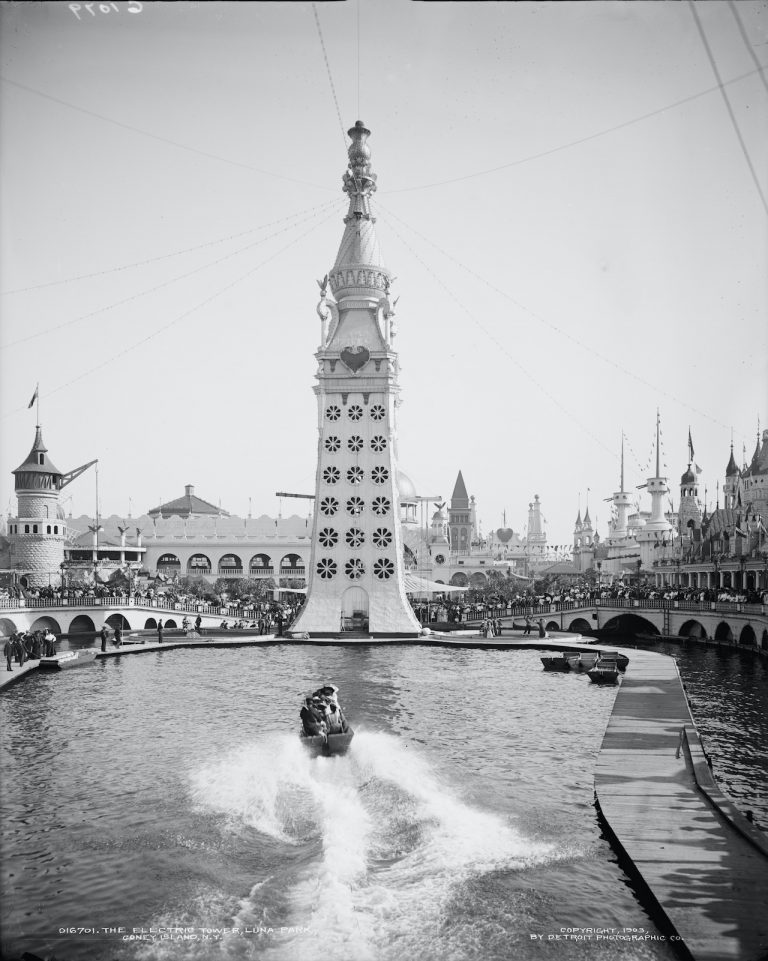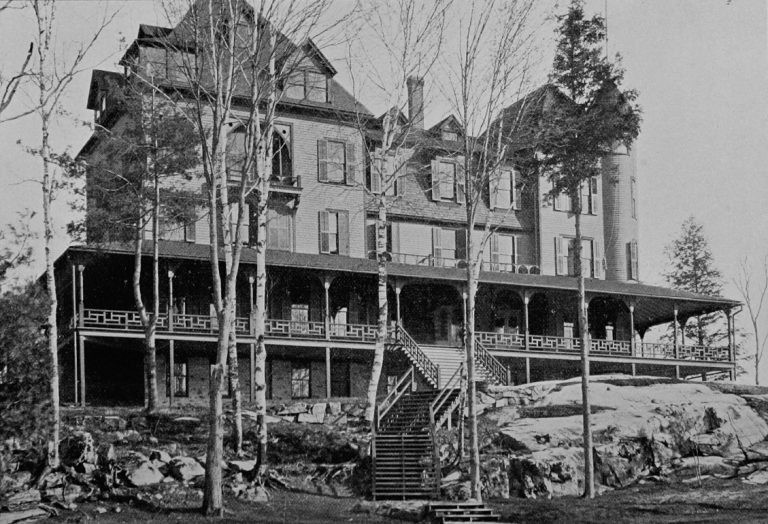The Electric Tower at the original Luna Park, Coney Island, New York
Luna Park at Coney Island, New York, opened its doors in 1903 with the magnificent Electric Tower. It would became the first of any number of amusement parks that would inspire the use the name “Luna Park” around the world that continue until this day, including the current Luna Park In Coney Island which opened in 2010 a short distance away, though it has nothing to do with the original other than namesake.

Originated by the entrepreneurs and showmen Frederic Thompson and Elmer “Skip” Bundy, two competitors in the exposition trade who joined forces after Bundy was able to out-duel Thompson for the concessions of a Midway ride at the 1901 Pan-American Exposition in Buffalo, New York. The name of of the diorama ride was “Darkness and Dawn,” an elaborate work Thompson had been working in for a few years.
The exposition in Buffalo that year also happened to feature an “Electric Tower” which would later become the central piece of Thompson and Bundy’s “Luna Park” in Coney Island. As described by the Buffalo News in their Feb 10, 1900 edition—
This magnificent steel structure is to stand on a commanding elevation at the north end of the Court of Fountains. Its base will be semi-circular in form, and will be 265 by 195 feet in dimension. The base will consist of arch-forming columns which will rise to a height of 71 feet.
On top of these columns will be a promenade. In front of the tower, partly enclosed by the semi-circular foundation, will be an immense basin of water, with one great splashing fountain, which at night will be beautifully illuminated with white and colored electric-lights.
The second landing above the ground will be 200 feet high, the third 253 feet and the fourth 292. The distance to the ground to the extreme top of the great tower will be 350 feet. In other words, this sky-piercing structure will be more than twice as high as the Prudential building.
It should be noted that the General Electric Building that stands in downtown Buffalo today is obviously not the same one as the tower built for the Pan-American Exposition wasn’t meant to be permanent, yet it did inspire the construction of the current building that was constructed in 1912 and added to the National Register of Historic Places in 2008.
When finally complete for the Pan-American Exposition in 1901, the tower in Buffalo would stand 391 feet above the fairgrounds and be equipped with 44,000 eight watt lightbulbs, garnering its electricity from the Niagara Falls.
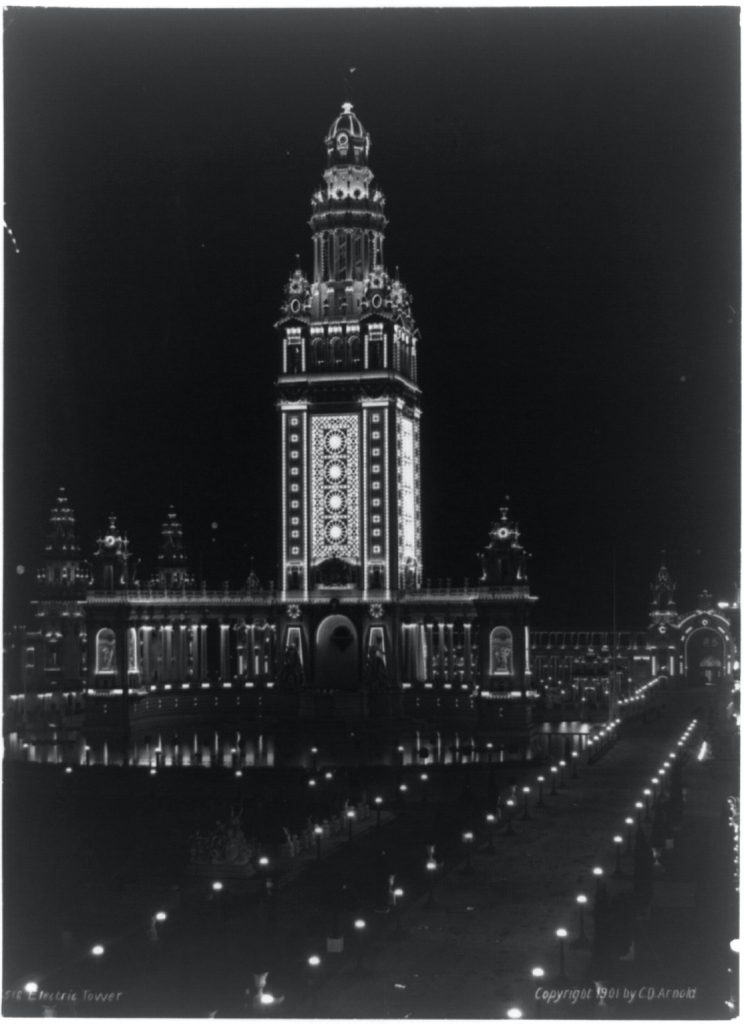
Initially set to open May 2, 1903, Luna Park would be delayed due to construction of the tower. As reported by the Sun,, management would open the gates the Saturday evening of May 16, at 8 p.m, simultaneously with the turning on of 250,000 electric lights in the tower and forty buildings within its inclosure.
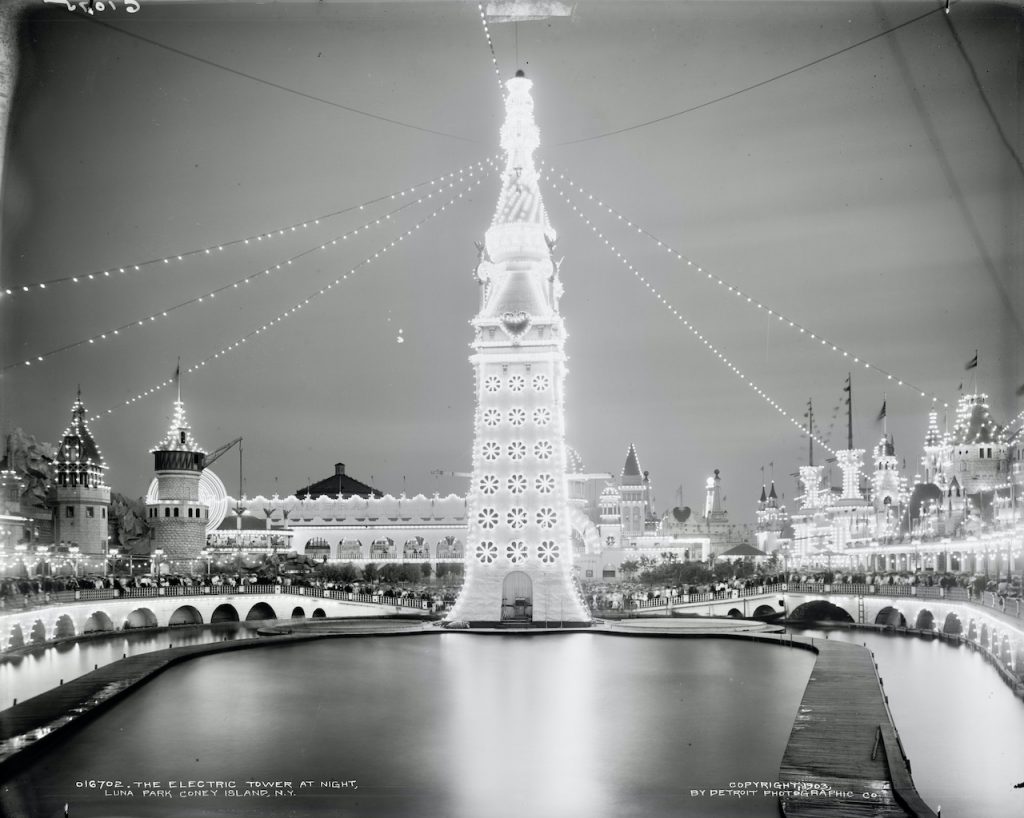
Upon its opening, the New York Daily Tribune would write of Luna Park–
LUNA PARK OPENED
Especially Fine Illuminations, Large Crowds Present
The New-York World’s Fair at Luna Park, Coney Island, was opened last night under the most auspicious circumstances. Although last night was an invitation opening, at 10 o’clock fifty-three thousand people had paid for admission to the grounds. The illuminations were especially pretty.
Electric fountains and cascades are there in abundance. The entrance to the park is an arch covering half of a city block. At each tip corner rests mammoth monoliths. From the top of this is presented a striking spectacle.
In comparison to Buffalo’s Electric Tower, the Luna Park tower was 200 feet tall decorated with 20,000 incandescent lamps – a smaller version of the tower that was the crowning feature of the Pan-American Exposition just two years prior. The following year, another large attraction opened in Coney Island, Dreamland, which would boast four times as many lights and an even bigger Electric Tower of its own.
Like the Elephantine Colossus Hotel its former grounds of which the amusement park partially stood on, much of Luna Park would be destroyed by a fire on August 13, 1944. The fire caused $800,000 in damage and the park never reopened, its insurance money tied up in legal disputes .
Porter, E. S., Thomas A. Edison, I., Kleine, Paper Print Collection & Niver. (1905) Coney Island at night. United States: Thomas A. Edison, Inc. [Video] Retrieved from the Library of Congress
